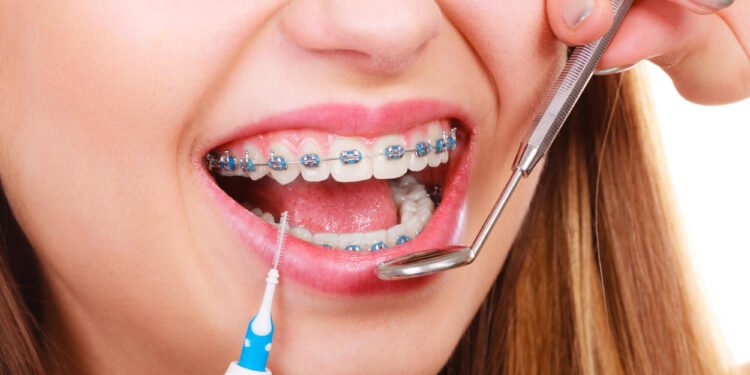Braces have the power to transform smiles and address both cosmetic and medical concerns. But have you ever wondered how braces move teeth? In this article, we’ll break down the biomechanics of braces, explaining the process in simple terms.
How Braces Move Teeth?
Braces utilize a fascinating process that involves exerting continuous pressure on teeth and jaws to reposition them and create a beautiful smile. The essential components of braces are brackets, which are affixed to the teeth, and an archwire that connects them. This archwire applies pressure to the teeth over time, gradually coaxing them into the desired position.
The Role of Periodontal Ligaments
Central to this process are the periodontal ligaments and soft tissues surrounding the teeth and bones. These ligaments function as anchors, holding the teeth in their current positions. However, they are dynamic and can stretch or compress as needed. When braces work their magic, shifting a tooth to the right, for instance, the ligament on the right side compresses, and new bone forms on the left to fill the gap, facilitating the movement.
Correcting Overcrowding
Overcrowding is a common issue, often resulting from a jaw that is too small or teeth that are too large. Braces come to the rescue by individually moving teeth back, forward, or sideways to create enough space for them to sit comfortably side by side.
Some younger patients with severe overcrowding may benefit from an expander to increase their jaw size. If the palate has already fused, more intricate solutions may be necessary, such as placing small pins from the expander into the roof of the mouth or even involving an oral and maxillofacial surgeon to make strategic incision on either side of the upper jaw.
In some cases, tooth extraction may also be considered an alternative to create additional space. Your orthodontist will carefully evaluate and discuss the best options for your specific needs.
Correcting an Overbite
An overbite, characterized by the vertical overlap of the upper and lower teeth, and an overjet, which is the protrusion of the upper teeth over the lower ones, can require adjustments to both the upper and lower teeth. To address an overbite, the upper front teeth may be raised, the lower front teeth lowered, or a combination of both.
Alternatively, the lower back teeth might be repositioned to slightly open the lower jaw. For managing an overjet or protrusion, the front teeth may be moved forward, the lower teeth moved forward, or a combination of both, tailored to each patient’s unique situation.
Moving Teeth Forward
While many associate braces with pushing teeth toward the palate, they can also pull teeth outward toward the lips. This effect is achieved through the use of an archwire made of nickel titanium with shape memory. The wire is bent to meet the bracket on the tooth, but over time, it returns to its original U shape, gently guiding the tooth forward.
What Problems are Typically Addressed First with Braces?
Braces treatment is typically divided into three stages:
1. Level and Align
The initial phase involves moving teeth to align them side by side. This may include vertical and horizontal adjustments to ensure that the edges of the teeth form a straight line.
2. Bite Correction
The second step focuses on correcting bite issues, such as overbites, underbites, or crossbites. This phase also involves closing these spaces for patients with gaps between their teeth.
3. Fine Tuning
In the final months of treatment, the orthodontist fine-tunes the position of each tooth to ensure they are in their optimal locations before removing the braces.
When Will You Start to See Results?
It’s important to understand that while braces apply constant pressure, visible changes in tooth alignment do not occur daily. After an adjustment, you may experience some discomfort as your teeth adapt to the new pressure. Most of the time, between appointments, the braces maintain your teeth in the desired position.
Braces are designed to move teeth gradually to ensure both comfort and effectiveness. Attempting to move teeth too quickly can be painful and may even harm the roots of the teeth and the surrounding bone. Teeth require time to shift into their desired positions, and the bone must adapt by either reabsorbing or generating new bone tissue, depending on the direction of tooth movement.
Every orthodontic case is unique. Some individuals seeking minor cosmetic changes may wear braces for as little as six months. In contrast, those with more complex orthodontic issues involving teeth and jaw alignment may require braces for up to three years.
Final Words: How Braces Move Teeth?
In conclusion, the science behind how braces move teeth is a testament to the marvels of orthodontics. Braces gradually and methodically guide teeth into ideal positions, addressing overcrowding and misalignment. With patience and proper care, braces can help you achieve the smile you’ve always dreamed of while ensuring the health and functionality of your teeth.




